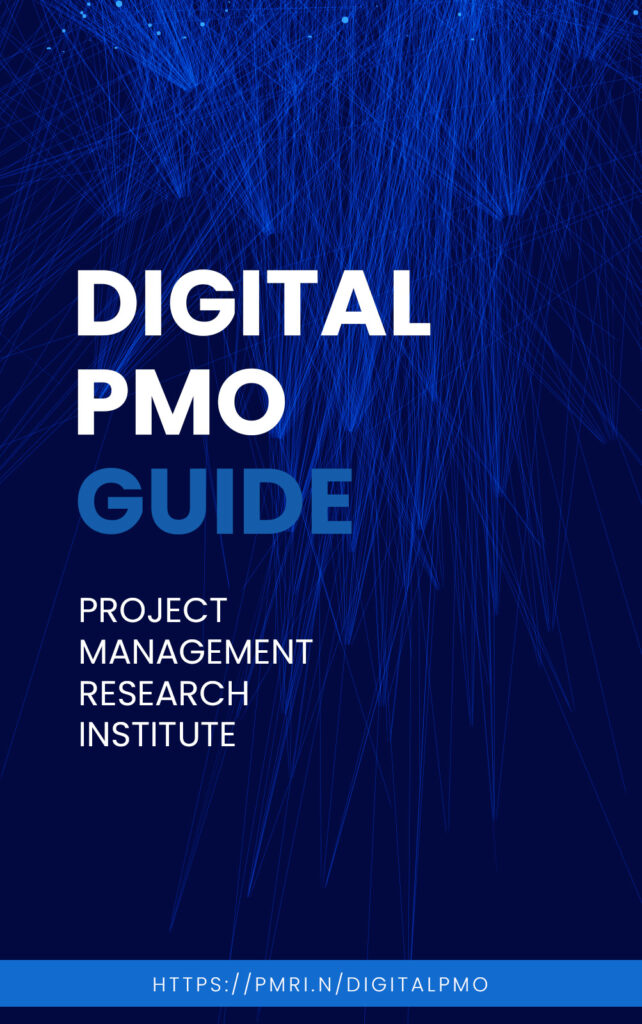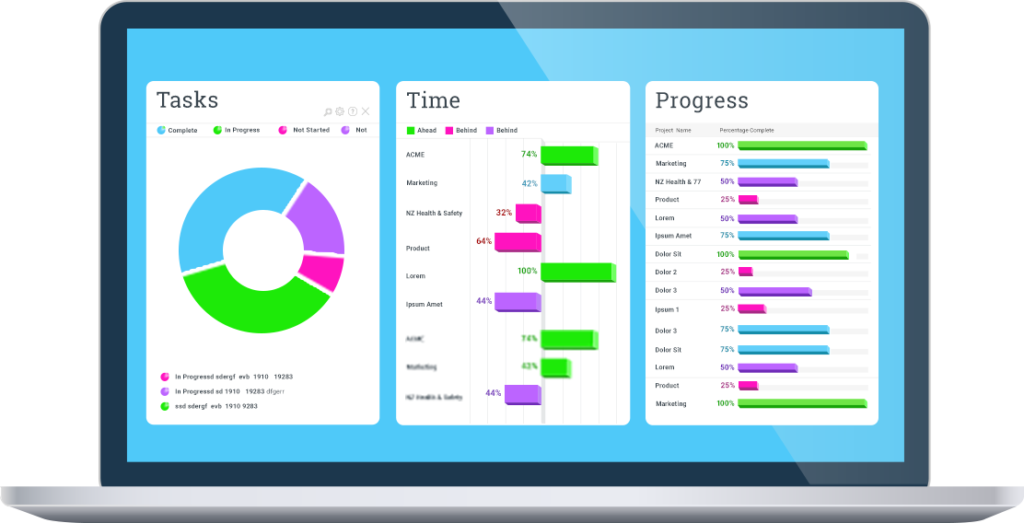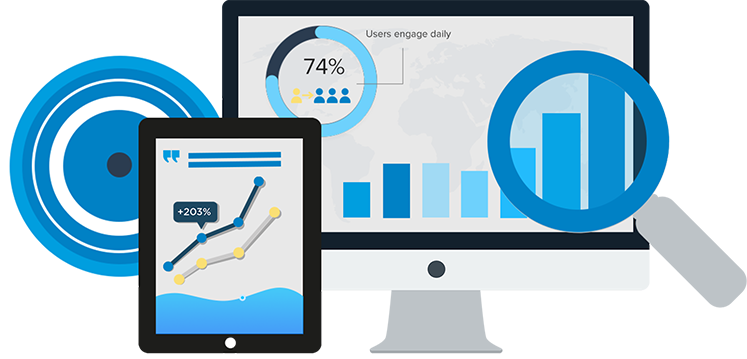
Contents
- What is Digital PMO?
- Key benefits of digital PMO
- Key features of digital PMO
- Leading Digital PMO tools
- Who must drive digital PMO?
- Implementation steps
- Implementation time & cost
- Critical success factors
- Digital PMO trends
Download the digital PMO guide
Digital PMOs provide almost real time task level, work package level, project level, program level and finally portfolio level progress information to the right stakeholders almost real time, without the need for manual progress status updates. This is accomplished by;
- Standardizing the key project workflows to global best practices
- Digitizing the project workflows
- Integrating with other systems
- Integrating across projects / locations
Digital PMO will help to;
- Establish a robust communication platform cutting across various project stakeholders like Owners, Consultants, Contractors, Sub-contractors and various engineering teams in the shortest possible time (weeks). This will help to establish on-demand, single source of information, eliminating the long wait for accurate project progress information.
- Transform the project management culture of the organization / team from reactive project management to pro-active project management. The focus shifts to prevention.
- Save time by focusing on the areas which need immediate attention, without spending much time to understand the problematic areas.
Key features of Digital PMOs based on current trends
- Project portfolio management
- Contract management
- Schedule and progress management
- Engineering deliverable management
- Procurement deliverable management
- Construction deliverable management
- Budget planning & Control
- Resource management
- Quality management
- HSE management
- Risk management
- Project closure
Other noteworthy features / trends are standards compliances and BIM enablement
Leading Digital PMO tools of 2023 (not in any specific order)
Leapthought
Leapthought – This fully ISO 19650-3 compliant tool has a very progressive BIM enabled features like;
- BIM enabled submissions for Design, Tender, Asset handover, Registrations, RFIs, Quality inspections
- Computational BIM enabled quality control
- BIM enabled visual delivery tracking
- Comprehensive site and field management
For more details click here
Smart Project (IPMS)
SmartProject – From Wrench Solutions is a feature rich Digital PMO tool which suits EPC projects of any size. Here are the key features;
- Project portfolio management
- Project health parameters
- Project performance monitoring
- Portfolio dashboards
- 4D/5D simulation
- Schedule and progress management
- WBS scheduling
- Roleup and roledown progress
- Realtime progress monitoring
- Schedule re-forecasting
- Engineering deliverable management
- WBS scheduling
- Roll-up and roll-down progress
- Realtime progress monitoring
- Schedule re-forecasting
- Procurement deliverable management
- Deliverable list management
- Pre-order management
- Post-order management
- Expediting reports and dashboards
- Construction deliverable management
- Planning and weightages definition
- Quantity distribution
- Actual quantity capture
- Drone interfaces
- Reforecast quantity
- Cost and cashflow management
- Cost breakdown structure
- Capture commitments
- Cashflow management
- Cost control and evm
- Contract management
- Standard contract templates
- Contract documents approvals
- Document archival
- Document renewal notification
- Resource management
- Resource planning
- Resource distribution
- Resource logging
- Resource dashboards
- Quality management
- Inspection request management
- Field quality capture
- Analyse corrective action
- Corrective action and reporting
- Safety management
- HSE Audit plan
- HSE field update
- CAPA report
- HSE performance
- Risk management
- Risk register
- Risk score calculation
- Risk heatmap
- Risk mitigation
- Interface management
- Interface request management
- Interface document revisions
- Interface document workflow
- Interface definitions
- Snag management
- Record snag
- Route snag for rectification
- Record correction
- Closeout
- Asbuilt handover
For more details click here
Unifier
Unifier – From Oracle has the following features;
- Project assessment
- Funding allocation
- Purchase order issuance
- Task authorisation
- Inspection notifications
- Data accessing and processing
For more details click here
Asite
Asite – Asite’s product suit comprises of;
- Supplychain management
- Supplier relationship manager
- e-trading
- Permits
- Project portfolio management
- Project workflow
- Common Data Environment (CDE)
- Project financials
- Contract management
- Asset performance management
- Digital rwun
For more details click here
Planisware
Planisware – Planisware Enterprise is the integrated solution that brings together budgets, forecasts, schedules, resources, and actuals. The featurelist of planisware include;
- Portfolio management, Project portfolio visibility,
- Budget management
- Roadmapping
- Capital approval
- Work requests
- Program management
- Resource capacity planning
- Generic and named resource management
- Time-tracking
- Project management, supporting waterfall and agile methodologies
- New product development (e.g. Stage-Gate®) process support
- Agile at the team level, and Agile across the Enterprise with SAFe, Application portfolio management
- Engineering contract management, Product management, Enterprise social networking etc
For more details click here
Aconex
Aconex – Aconex provide Owners and delivery teams better visibility, control, reduced risk, and connected teams. Drive efficiency in design and construction coordination, project controls and cost management, document management, and field management. Get fast time to value with construction management software that is easy to use and deploys in days. Aconex is from Oracle corporation.
For more details click here
Get a copy of the Digital PMO Guide

For the benefit of those who are new to Project Management Office (PMO), here is a quick walkthrough of the traditional project management offices;
What is Project Management Office (PMO)?
Project Management Offices (PMO) are centralized functions within organizations, facilitating professional project, program and portfolio management within organizations, by;
- Providing standard procedures & guidelines for project selection, planning, execution, monitoring & controlling and closing
- Providing tailoring guidelines
- Enforcement of these defined procedures and guidelines through audits, training, corrective & preventive actions
- Communicating status to the relevant stakeholders
- Staffing of project management teams (in some cases)
- Advising the key stakeholders on potential risks and recommending corrective and preventive actions
Gartner’s classification of PMOs?
Centralised PMO
- Centralised platform for knowledge and experience sharing by the experienced performers with the inexperienced, so that work can happen
- Processes are not defined / standardized
Compliance PMO
- Establishing standard practices
- Focus on establishing system for monitoring & controlling variances
- Audits
Delivery PMO
- Planning & controlling the tactical execution of projects
- Promotion of proactive project management
- Repeatable processes and techniques
- Results based culture
Activist PMO
- Enabling approach as opposed to controlling approach
- Reviews business cases of project proposals
- Project portfolio dashboard-based monitoring & control
- Strategic
- Results based culture
- Directive PMO
Project Management Institute (PMI)’s classification of PMOs
Directive PMO
- The directive PMO is the highest level of the PMO roles. They maintain a strong degree of control over many aspects of the project, and they often communicate directly with stakeholders and clients, as well as work intimately with the CIO.
- Directive PMOs usually hire and assign project managers and serve as their guides and supervisors. They will be an important part of project planning and managing an organization’s projects throughout the lifecycle in terms of scope, budget and timeframes.
- Project performance can often be linked to the active participation and initiatives set out by a directive PMO system.
Controlling PMO
- The next level PMO according to the PMI breakdown is the controlling PMO. They have a good degree of control over managing projects but not as much as the directive PMO.
- The controlling PMO approaches project control as someone who enforces the guides and practices agreed upon in the project charter, as well as being in charge of conformance and compliance.
- They also make sure everyone is using the right tools, and has some oversight over resource management. In less complex projects, it is possible to adopt a PMO in between directive and controlling.
Supportive PMO
- The supportive PMO is the third type of PMO according to the Project Management Body of Knowledge, or PMBOK. This type of PMO has very little direct control over the project, but instead serves as project support for when team members ask for more guidance.
- In other words, one can say the supportive PMO is a consultant. The supportive PMO system is also used for helping to onboard and train staff, arrange shared templates and common analysis metrics
- .As far as the right PMO for one’s project management methodology, the supportive PMO should not have much of a say in prioritization, but when it comes to real-time change management, it is useful.
Limitations of traditional PMOs
- Reactive than pro-active – For PMOs have to be effective, they must be able to prevent problems before they happen. This is possible only when PMOs have balanced alignment towards project management teams (the ones who focuses on monitoring&controlling) and project teams (the ones who focuses on project execution). Most of the traditional PMO’s focus is to cater to the needs of the senior management and the project management teams.
- Delays in reporting – The time lag between reporting is another major challenge. For EPC projects, the cycle time of reporting varies from weekly to monthly. That means, before a problem gets highlighted to the key people, lot of time is wasted.
- Varied status update time – Unless the status update times of the contractors, sub-contractors and suppliers are aligned, monitoring the actual progress is difficult.
- Lack of accuracy of data – when the number of stakeholders are large, maintaining the accuracy of status updates become a major challenge.

Digital PMO
They will be able to focus on the problematic areas quickly. With the ability to forecast, project management teams will become more proactive.
Where to start?
- Understand the basic functionality of standard digital PMO applications
- With a better insight into what a digital PMO can do for you, do the following steps;
- Identify key stakeholders
- Identify the must have reporting requirements
- Take stock of the scheduling, ERP, Inventory, HR, Financial accounting systems they are using
- Identify the integration points
- Define the digital PMO tools evaluation criteria
- Evaluate the leading digital PMO tools available the market against your pre-defined criteria
- Select the right tool and implement
For any further information contact us

